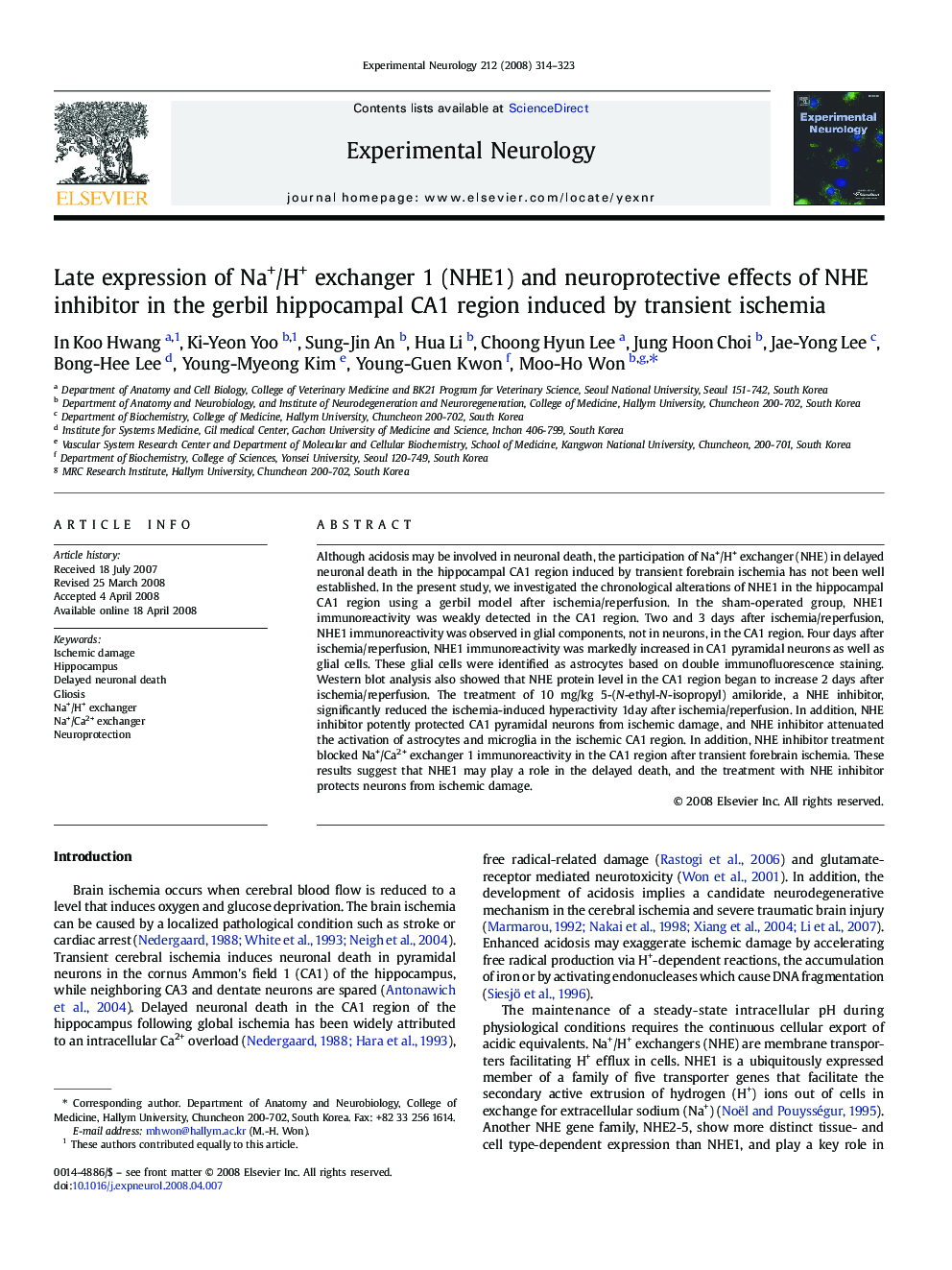| Article ID | Journal | Published Year | Pages | File Type |
|---|---|---|---|---|
| 3056557 | Experimental Neurology | 2008 | 10 Pages |
Although acidosis may be involved in neuronal death, the participation of Na+/H+ exchanger (NHE) in delayed neuronal death in the hippocampal CA1 region induced by transient forebrain ischemia has not been well established. In the present study, we investigated the chronological alterations of NHE1 in the hippocampal CA1 region using a gerbil model after ischemia/reperfusion. In the sham-operated group, NHE1 immunoreactivity was weakly detected in the CA1 region. Two and 3 days after ischemia/reperfusion, NHE1 immunoreactivity was observed in glial components, not in neurons, in the CA1 region. Four days after ischemia/reperfusion, NHE1 immunoreactivity was markedly increased in CA1 pyramidal neurons as well as glial cells. These glial cells were identified as astrocytes based on double immunofluorescence staining. Western blot analysis also showed that NHE protein level in the CA1 region began to increase 2 days after ischemia/reperfusion. The treatment of 10 mg/kg 5-(N-ethyl-N-isopropyl) amiloride, a NHE inhibitor, significantly reduced the ischemia-induced hyperactivity 1day after ischemia/reperfusion. In addition, NHE inhibitor potently protected CA1 pyramidal neurons from ischemic damage, and NHE inhibitor attenuated the activation of astrocytes and microglia in the ischemic CA1 region. In addition, NHE inhibitor treatment blocked Na+/Ca2+ exchanger 1 immunoreactivity in the CA1 region after transient forebrain ischemia. These results suggest that NHE1 may play a role in the delayed death, and the treatment with NHE inhibitor protects neurons from ischemic damage.
